The Audi 100 name has a long and occasionally painful history in the United States. The first-generation 100 first appeared here as a 1970 model, when Audi’s official name was still Audi NSU Auto Union, with U.S. sales continuing through 1977. The second-generation 100 got the 5000 name for North America when it showed up for the 1978 model year, and sales of it and its third-gen successor
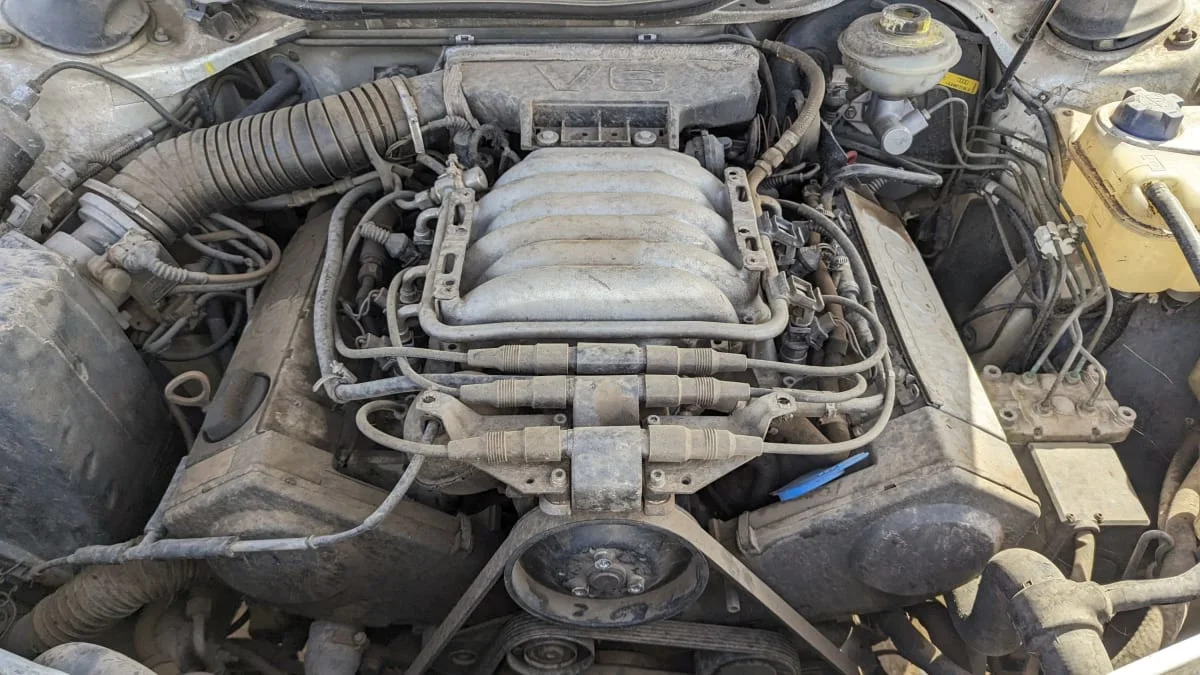
The C4 Audi 100 was essentially an extensive facelift of the C3, but one major mechanical change took place: the introduction of Audi’s first V6 engine.
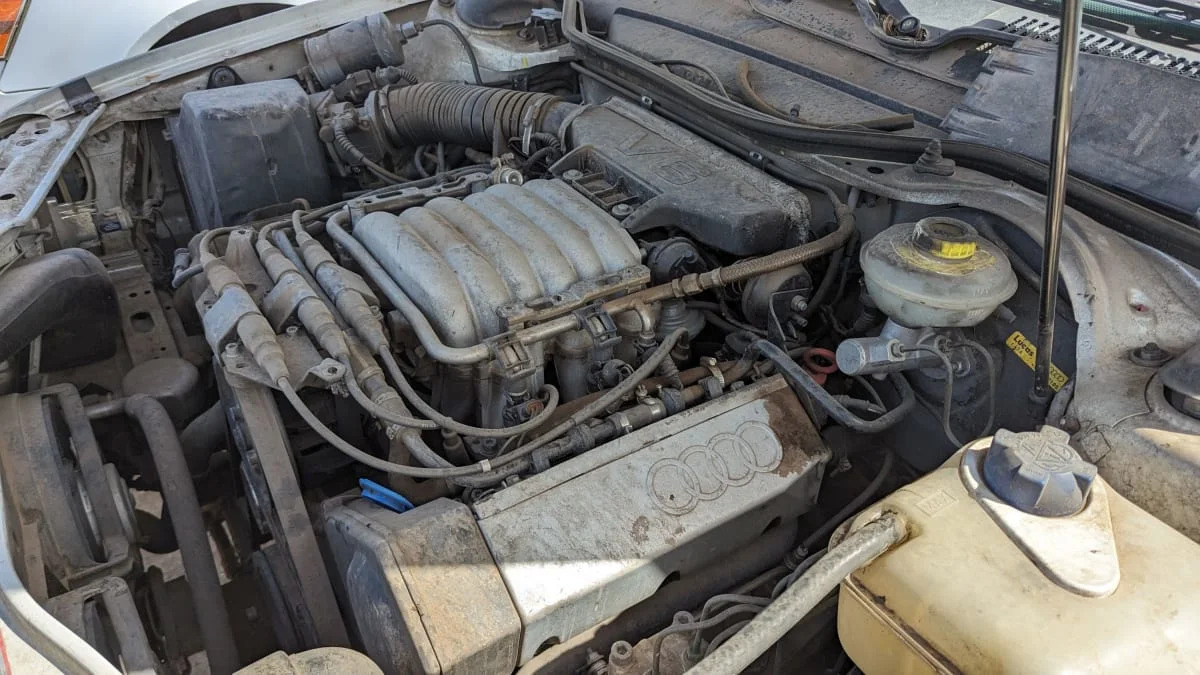
This is a 2.8-liter rated at 172 horsepower and 184 pound-feet, driving the front wheels in this non-Quattro car.
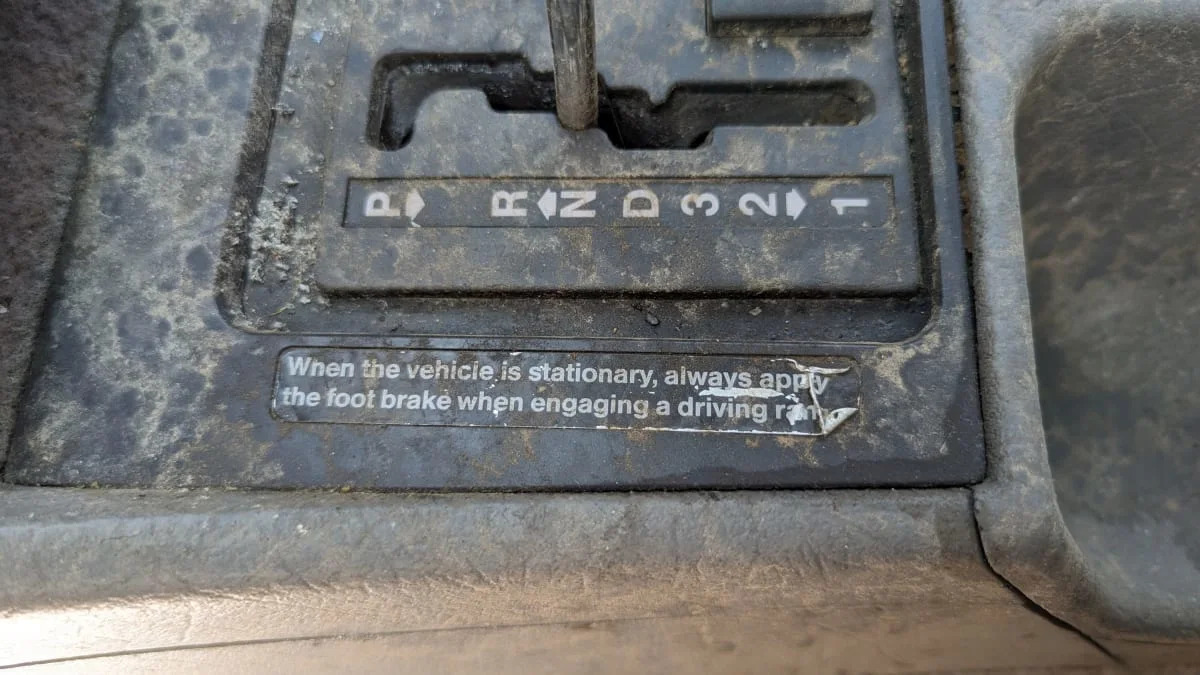
Because of the Unintended Acceleration nightmare, which was still killing Audi sales here
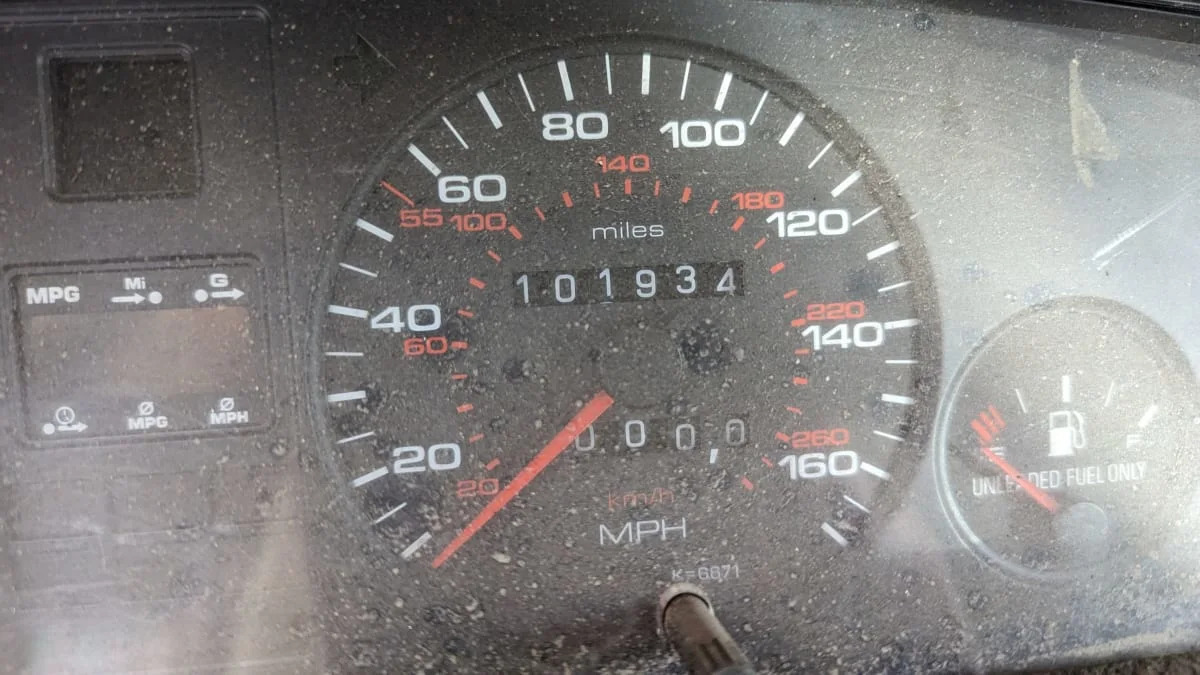
This car’s body looks great after 31 years, with neither dents nor rust. The odometer shows that it traveled just a bit into six-figure mileage during its life.
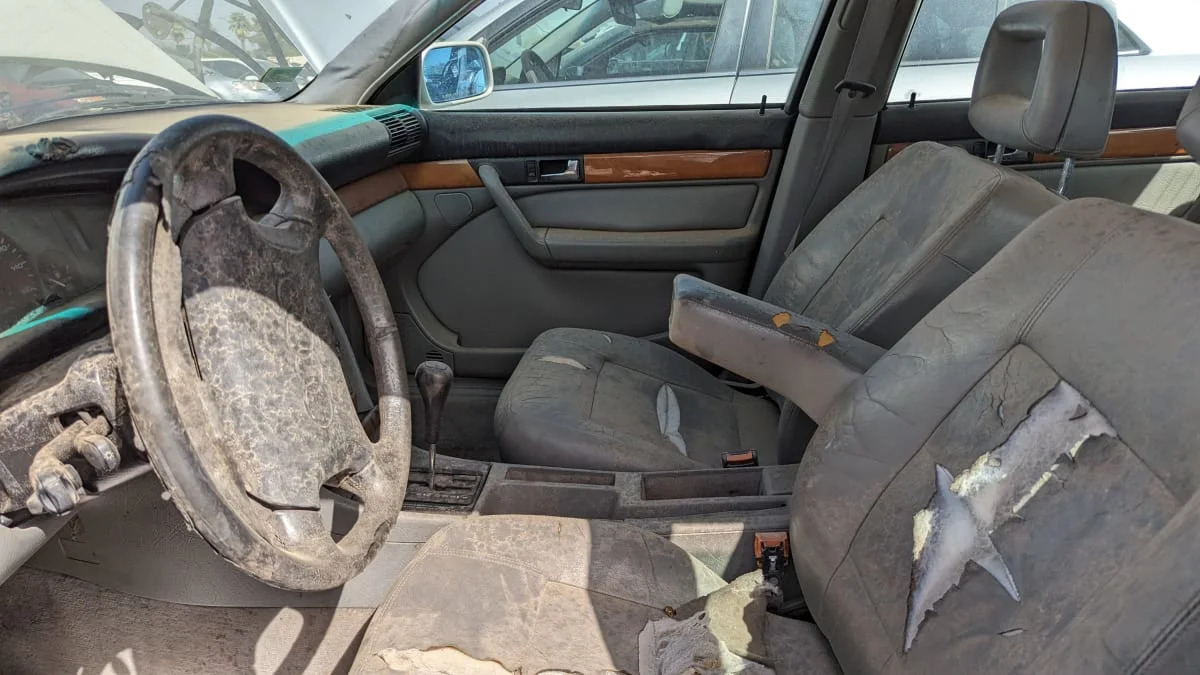
The fearsome Arizona sun took its toll on the seat leather, but otherwise the interior looks decent.
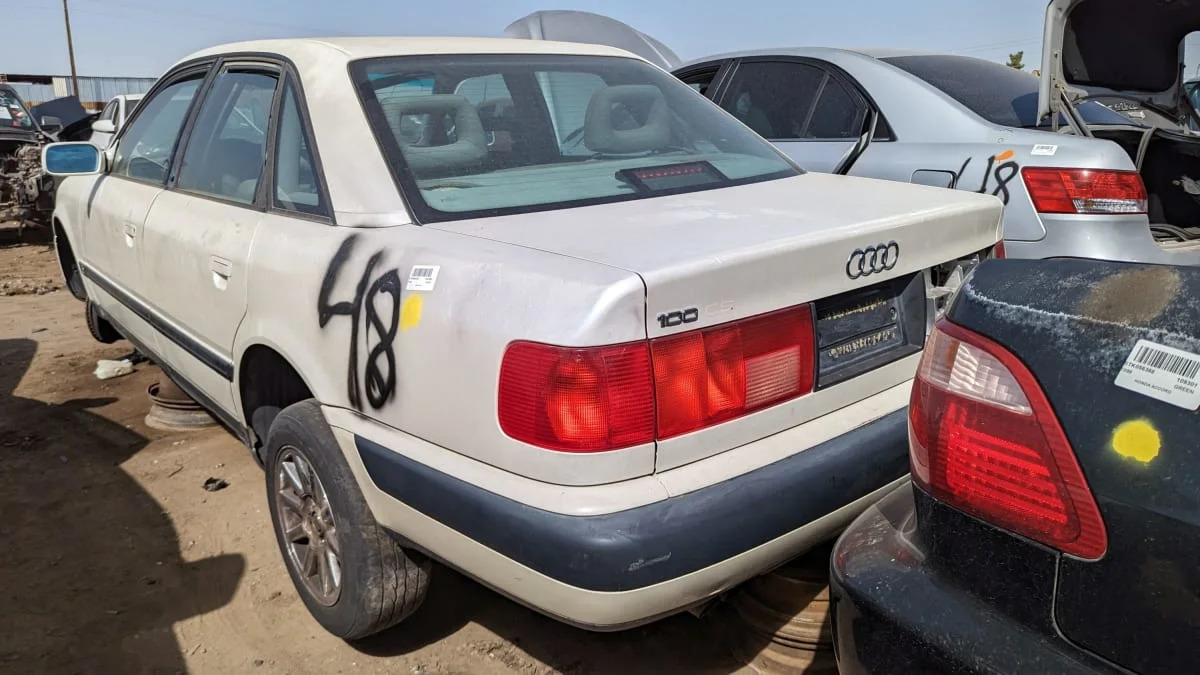
Its owner or owners took good care of it, we can see.
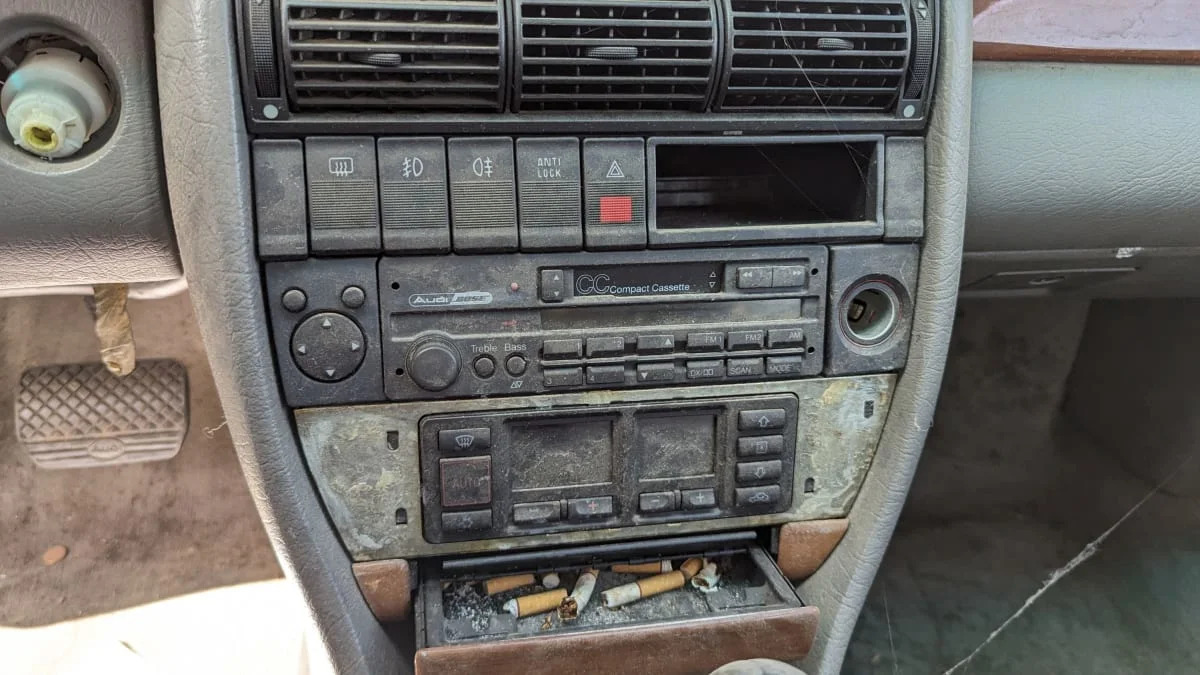
Note the “Compact Cassette” text on the factory radio; that was the official name for what came to be known as just the cassette tape. By 1992, Audi radios may have been the last place that designation was used.
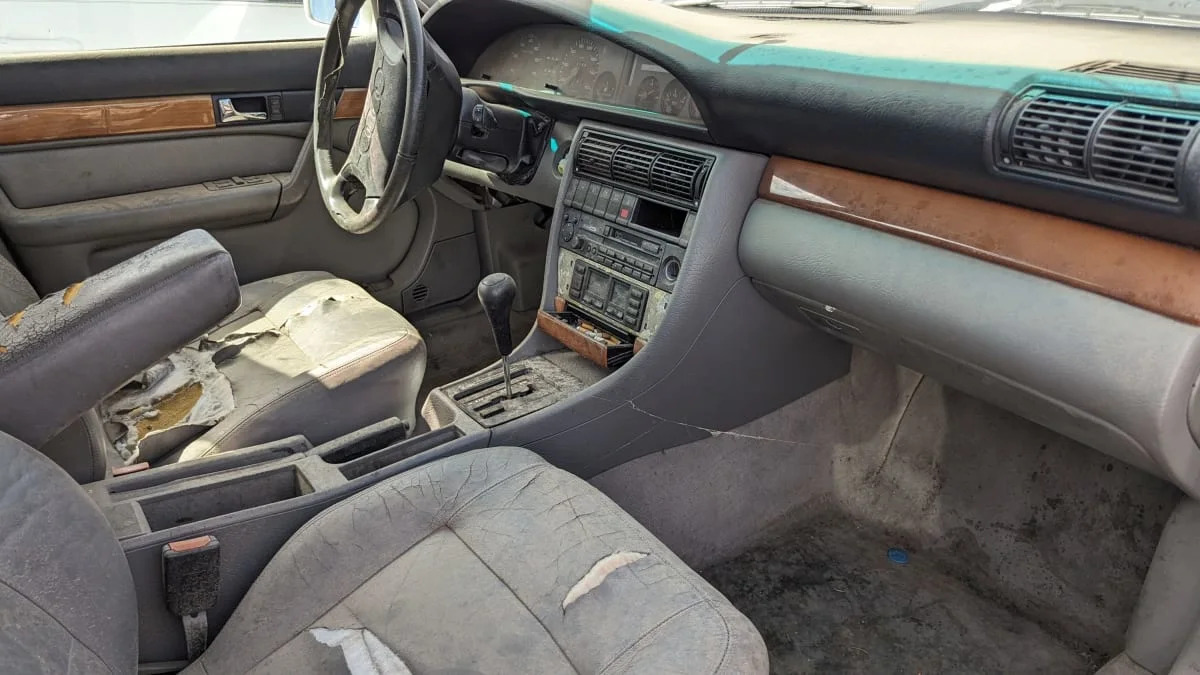
The MSRP on the front-wheel-drive 1992 Audi 100 CS sedan was $34,400, or about $76,669 in 2023 dollars. That was a bit cheaper than its BMW 525i competitor, which listed at $35,600 (about $79,345 after inflation).
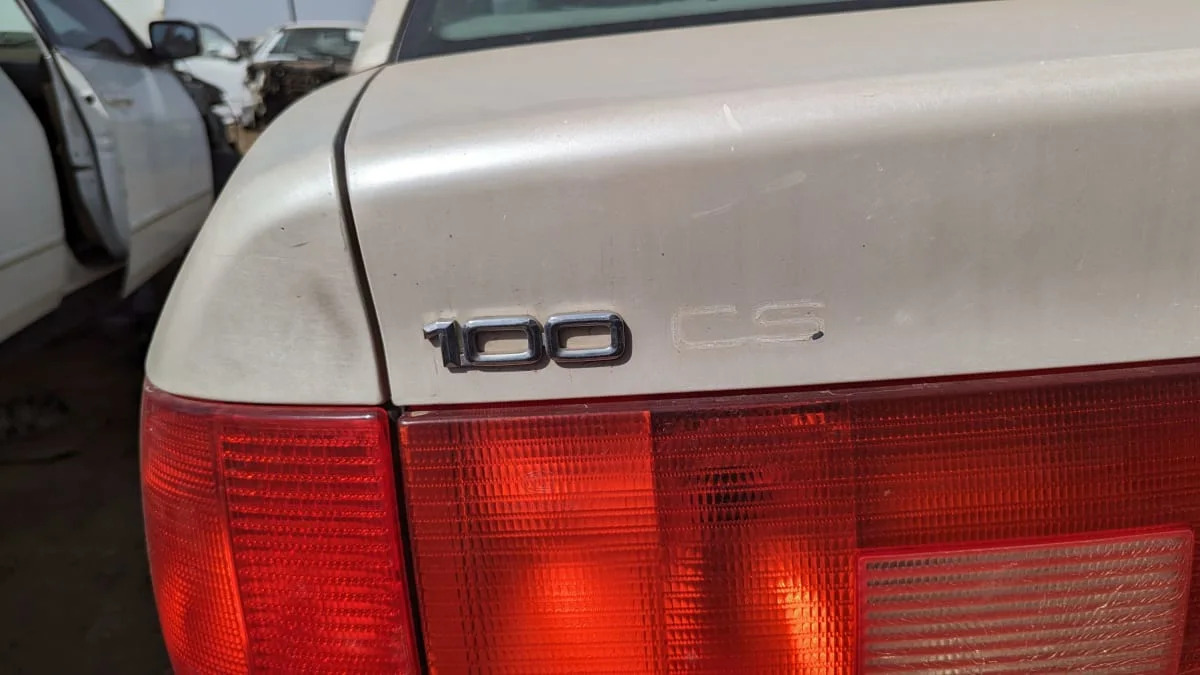
For the 1995 model year, Audi ditched the 100 name and renamed this car the A6. The 90 became the A4 here the following year.
Welcome to the 1990s.
In their homeland, the Audi 80 (known as the Audi 90 on this side of the Atlantic) and Audi 100 got suspiciously American-sounding music in this TV advertisement. Vorsprung durch Technik.